Related Research Articles

Graffiti is art that is written, painted or drawn on a wall or other surface, usually without permission and within public view. Graffiti ranges from simple written words to elaborate wall paintings, and has existed since ancient times, with examples dating back to ancient Egypt, ancient Greece, and the Roman Empire.
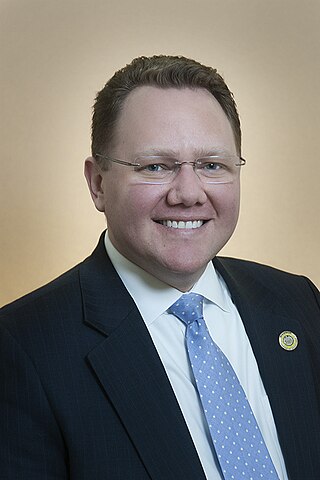
Nicholaus Ryan Kipke is an American politician. Since 2007, he has served as a member of the Maryland House of Delegates representing District 31. He previously served as the Minority Leader of the Maryland House of Delegates from 2013 to 2021.

Street art is visual art created in public locations for public visibility. It has been associated with the terms "independent art", "post-graffiti", "neo-graffiti" and guerrilla art.

The city of Baltimore, Maryland, has been a predominantly working-class town through much of its history with several surrounding affluent suburbs and, being found in a Mid-Atlantic state but south of the Mason-Dixon line, can lay claim to a blend of Northern and Southern American traditions.
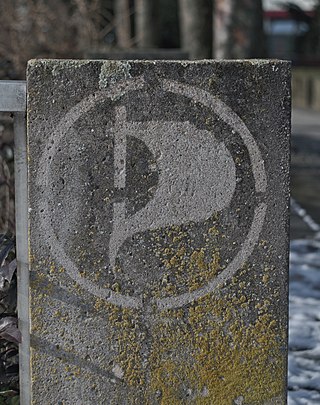
Reverse graffiti is a method of creating temporary or semi-permanent images on walls or other surfaces by removing dirt from a surface. It can also be done by simply removing dirt with the fingertip from windows or other dirty surfaces, such as writing "wash me" on a dirty vehicle. Others, such as graffiti artist Moose, use a cloth or a high-power washer to remove dirt on a larger scale.
Melbourne, the capital of Victoria and the largest city in Australia, has gained international acclaim for its diverse range of street art and associated subcultures. Throughout the 1970s and 1980s, much of the city's disaffected youth were influenced by the graffiti of New York City, which subsequently became popular in Melbourne's inner suburbs, and along suburban railway and tram lines.
Community Greens, sometimes referred to as backyard commons, urban commons, or pocket neighborhoods, are shared open green spaces on the inside of city blocks, created either when residents merge backyard space or reclaim underutilized urban land such as vacant lots and alleyways. These shared spaces are communally used and managed only by the residents whose homes abut them. They are not a public park, a private backyard, or a community garden; however, they can function as all three.

Baltimore is the most populous city in the U.S. state of Maryland. With a population of 585,708 at the 2020 census, it is the 30th-most populous city in the United States. Baltimore was designated an independent city by the Constitution of Maryland in 1851, and is currently the most populous independent city in the nation. As of the 2020 census, the population of the Baltimore metropolitan area was estimated to be 2,838,327, making it the 20th-largest metropolitan area in the country. When combined with the larger Washington metropolitan area, the Washington–Baltimore combined statistical area (CSA) has a 2020 U.S. census population of 9,973,383, the third-largest in the country.
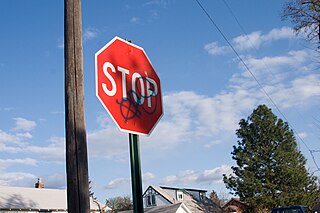
Graffiti are writing or drawings scribbled, scratched, or sprayed illicitly on a wall or other surface in a public place. Graffiti ranges from simple written words to elaborate wall paintings. Graffiti, consisting of the defacement of public spaces and buildings, remains a nuisance issue for cities.
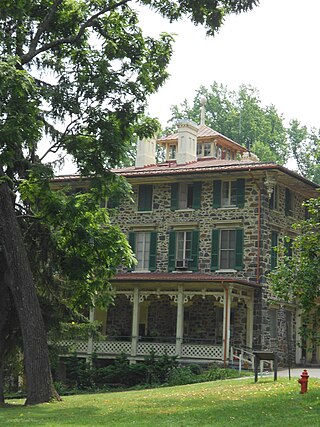
Gwynns Falls/Leakin Park is a park in Baltimore, Maryland. It is the second-largest woodland park in the United States, constituting a contiguous area of 1,216 acres (492 ha). Envisioned as a "stream valley park" to protect Baltimore's watersheds, including the Gwynns Falls, from overdevelopment and to preserve their natural habitats. It is well known for the fact that over 75 bodies have been discovered in the park since the 1940s. It is also home to the Baltimore Herb Festival.

William Claiborne Ferguson IV is an American politician, attorney, and former schoolteacher. He is a Democratic member of the Maryland Senate, representing the 46th legislative district since 2011, and serving as the President of the Maryland Senate since January 8, 2020. The district is composed of parts of Baltimore City.
Parachuting Rat was a series of artworks in Melbourne, Australia, created by Banksy. On 26 April 2010, one was painted over by council contractors, leading to local and international coverage and debate on the nature of street art and its preservation, and new measures for its protection.

Graffiti in Toronto, Ontario, Canada, is a cause of much disagreement among its residents. Graffiti is seen by some as an art form adding to the Toronto culture; however, others see graffiti as form of vandalism, viewing it as ugly, or as a form of property damage.
Gaia is an American street artist who has received significant museum showings and critical recognition. Based in Baltimore, he has created large-scale murals worldwide to engage the community where he works in a dialogue by using historical and sociological references to these neighborhoods.Besides continuing to do commissions for private and corporate clients, Gaia is teaching two classes a semester- Drawing and Professional Developmant at his alma mater MICA.
The history of Czechs in Baltimore dates back to the mid-19th century. Thousands of Czechs immigrated to East Baltimore during the late 19th and early 20th centuries, becoming an important component of Baltimore's ethnic and cultural heritage. The Czech community has founded a number of cultural institutions to preserve the city's Czech heritage, including a Roman Catholic church, a heritage association, a gymnastics association, an annual festival, a language school, and a cemetery. During the height of the Czech community in the late 19th century and early 20th century, Baltimore was home to 12,000 to 15,000 people of Czech birth or heritage. The population began to decline during the mid-to-late 20th century, as the community assimilated and aged, while many Czech Americans moved to the suburbs of Baltimore. By the 1980s and early 1990s, the former Czech community in East Baltimore had been almost entirely dispersed, though a few remnants of the city's Czech cultural legacy still remain.
Facter, or Fletcher Anderson, is a Melbourne based, Australian multi-disciplinary artist, best known for his colorful creatures rendered in a illustrative style.
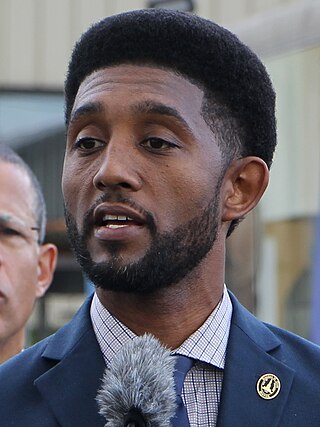
Brandon Maurice Scott is an American politician serving as the mayor of Baltimore, Maryland, since 2020. The city of Baltimore uses a strong mayor-council structure for their government, meaning Scott holds strong mayoral powers. He is the former president of the Baltimore City Council and was a candidate for lieutenant governor of Maryland in 2018, as well as a representative for Baltimore's second district. On May 6, 2019, Scott was elected to replace Jack Young as council president after Young succeeded Mayor Catherine Pugh. In September 2019, Scott announced his candidacy for mayor and won the June 2020 Democratic primary. Scott won the November 3 general election and took office on December 8, 2020.
Abortion in Maryland is legal up to the point of fetal viability and later when necessary to preserve the life or health of the pregnant person. The first laws regulating abortion in the state were passed in 1867 and 1868, banning abortion except by a physician to "secure the safety of the mother." Abortion providers continued to operate both within and outside of the law. Legal enforcement became more strict from the 1940s through 60s, with numerous police raids on abortion providers. In 1968, Maryland passed a liberalized abortion law that clarified the wording of the previous law, allowing abortion in hospital settings in cases of rape, severe fetal deformity, or when life and health were endangered.
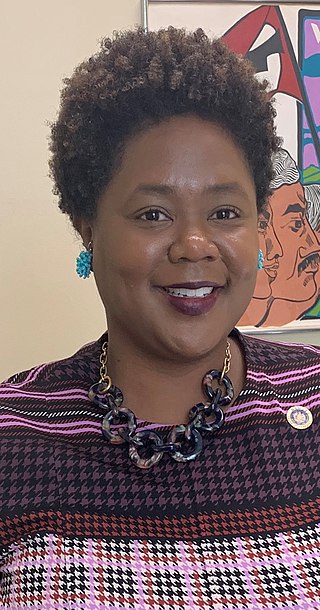
Melissa R. Wells is an American politician who has served as a member of the Maryland House of Delegates representing District 40 since 2019.
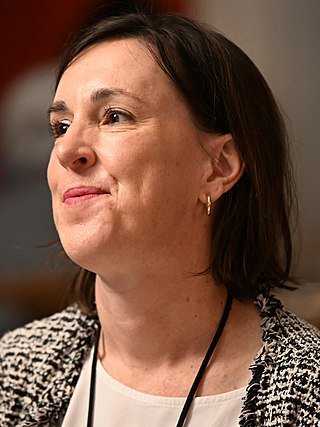
Elizabeth M. Embry is an American politician who is a member of the Maryland House of Delegates for District 43A in Baltimore. In 2018, she was a candidate for Lieutenant Governor of Maryland, running on the ticket of Prince George's County executive Rushern Baker. In 2016, she was a candidate for mayor of Baltimore.
References
- ↑ Gruskin, Abigail (24 July 2023). "Baltimore resident documents city's 'beautiful chaos,' creating archive of graffiti tags, signs and stickers". Baltimore Sun.
- ↑ McCauley, Mary Carole (10 April 2017). "Best-kept secret: Graffiti Alley behind The Motor House". Baltimore Sun.
- ↑ Hubbard, Moses (21 June 2012). "Living Walls – Pictures from Baltimore's Graffiti Alley". Baltimore Fishbowl.
- ↑ Zumer, Bryna (14 April 2022). "Graffiti removal scheduled for Baltimore's Howard Street on Saturday". WMAR-2 News. 2023 Scripps Media, Inc.
- ↑ "Top 10 Instagrammable Places in Baltimore". Baltimore Magazine. Visit Baltimore. 8 December 2019.
- ↑ "Graffiti Alley In Baltimore Maryland". City Towner. 16 January 2023.